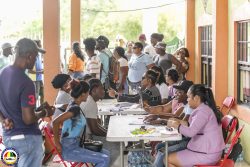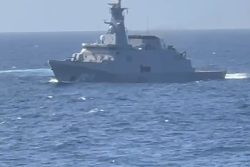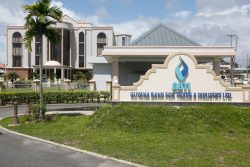Dear Editor,
I refer to Mr Emile Mervin’s letter of April 27 in the Stabroek News, with the caption ‘The President should think about redeeming his legacy.’
Stabroek News provides huge space to Mr Mervin’s letter that lacks an evidentiary base; Mr Mervin nitpicks about President Jagdeo’s broken promises, but without a word about what these promises are.
Notwithstanding the cantankerous political climate where some people are trying to make the country ungovernable, Guyana continues to positively move forward. But in order to fully evaluate these strides, we need to understand some aspects of the abysmal economic and social baseline inherited by the People’s Progressive Party/Civic (PPP/C) in 1992.
Achieving enhanced debt relief is one of the most commendable successes of this Government. Prior to the Heavily Indebted Poor Countries (HIPC) Initiative and Enhanced HIPC, what existed were the traditional concessional loans. However, under the traditional debt relief, many countries including Guyana experienced difficulties to service their debt payments, as many of them did not achieve appropriate growth rates in subsequent years. There, therefore, was a need to introduce new ideas and mechanisms.
By the mid-1990s, it was clear that the traditional debt relief packages were not succeeding, as they were still insufficient to reduce debt to sustainable levels. In 1996, the International Monetary Fund (IMF) and the World Bank presented the Initiative for Heavily Indebted Poor Countries (HIPC). The HIPC Initiative was set up to solve debt problems of the heavily-indebted poor countries which had a total debt of US$200B. Also, the HIPC initiative, as part of its eligibility criteria, tries to channel some funds accruing from debt relief to enhance social sector programmes, especially basic health and education.
The HIPC initiative modification in 1999 initiated the Poverty Reduction Strategy Paper (PRSP), approved by the World Bank and the IMF as part of the Enhanced HIPC. In order to be considered for HIPC assistance, a country must experience an unsustainable debt burden, and have a track record of reform and good policies as determined by the IMF and the World Bank. Guyana satisfied these criteria through good social and economic governance by the Jagdeo administration and the sustainability of sound macroeconomic fundamentals.

If the Jagdeo administration did not secure the HIPC debt relief, then the estimated debt payments in 2005 would have been $103 million; with the help of HIPC, the debt service payment was $43 million (see above table).
Also, President Jagdeo in December, 2006, at the Cochabamba Summit in Bolivia managed to secure the endorsement of a debt relief resolution for 100 per cent debt relief from the South American Community of Nations’ (SACN).
Debt relief was critical for the enhancement of the social services sector; the relief was the instrument for the diversion of funds for further development of social services in this country.
And Mr Mervin’s reference to President Jagdeo as an “autocrat” really indicates how little Mr Mervin knows about Guyana. Might I remind Mr Mervin that during the 1970s and 1980s free speech and free press were unheard of in the Guyanese vernacular. This is not the case here today.
Today, however, what exists is a growing abuse of press freedom. Most recently, the PNCR carried a full page advertisement in the newspapers, with the caption ‘Jagdeo – Selfish And Shameless.’ Incidentally, untruths punctuate this advertisement. This could not happen if President Jagdeo was indeed autocratic. And I hope, too, that all the freedom advocates for the media, including Mr Mervin, would know that this caption ‘Jagdeo – Selfish And Shameless,’ could only happen where there is freedom of the press.
The Jagdeo Initiative on Agriculture (JIA) is another commendable mechanism to grow more food in the region. The JIA triggered the ‘Grow more food’ campaign at a time when there was rising global food and fuel prices, and also was able to prominently position agriculture as a critical mechanism to sustain food security in the region.
There is a lot more I could say in this letter about this government’s achievements, but space limitations may not allow such a venture.
But we must evaluate the Guyana economy in terms of the external economic shocks over the years, the abysmal legacy the PNC bequeathed to the PPP/C and the years it took for Guyana to reach financial viability.
Yours faithfully,
Prem Misir








